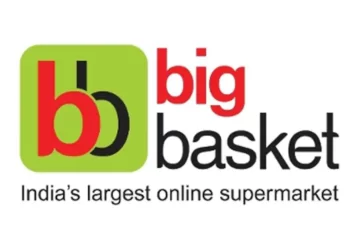Introduction
In the vast landscape of the internet, where websites are the digital storefronts of businesses and individuals alike, one name stands out as a beacon of success – WordPress. What began as a simple blogging platform has blossomed into a versatile and dominant content management system (CMS) that powers a significant portion of the web. The success story of WordPress is a testament to its adaptability, user-centric approach, and the democratization of online content creation.
The Genesis of WordPress
WordPress traces its roots back to 2003 when founders Matt Mullenweg and Mike Little launched the platform as a successor to the b2/cafelog blogging software. The primary goal was to create a user-friendly and extensible tool that would empower individuals to publish and manage their content online effortlessly. Little did they know that they were laying the foundation for a revolution in web publishing.
Open Source Philosophy
At the core of WordPress’s success lies its commitment to the open-source philosophy. Open source means that the source code of the software is freely available for anyone to inspect, modify, and enhance. This collaborative approach has fostered a global community of developers, designers, and enthusiasts who contribute to the continual improvement of WordPress.
The open-source nature of WordPress not only encourages innovation but also ensures that the platform remains flexible and adaptable to evolving technological landscapes. It empowers users to customize their websites to meet specific needs, fostering a sense of ownership and creativity in the online space.
User-Friendly Interface
One of the key reasons for WordPress’s widespread adoption is its intuitive and user-friendly interface. Even those with limited technical expertise can navigate the platform with ease, thanks to its straightforward dashboard and menu system. The simplicity of content creation, editing, and publishing has made WordPress accessible to individuals and businesses across diverse industries.
The block-based editor, introduced with WordPress 5.0 as part of the Gutenberg project, revolutionized content creation by providing a more visual and interactive experience. This modern editor simplifies the process of building and designing pages, making it more akin to crafting a document than traditional coding.
Extensibility through Plugins
WordPress’s success is intricately tied to its extensibility. The platform’s architecture allows users to enhance and extend its functionality through plugins – small software modules that add specific features or capabilities. The WordPress Plugin Directory boasts a vast array of plugins, addressing everything from SEO optimization and security to e-commerce and social media integration.
The plugin ecosystem has empowered users to tailor their websites to their unique needs without delving into complex coding. This modular approach to functionality has been crucial in attracting users from various backgrounds and industries, contributing to the platform’s versatility.
Themes for Design Flexibility
In addition to plugins, WordPress’s theme system offers users a wide range of design options. Themes determine the visual presentation of a website, allowing users to change its look and feel without altering the content. From free themes provided by the WordPress Theme Directory to premium themes developed by third-party designers, the variety ensures that users can find a theme that aligns with their brand or personal style.
This design flexibility, coupled with the ability to customize themes, has been instrumental in WordPress’s success. Whether creating a blog, portfolio, business website, or e-commerce store, users can mold their online presence to reflect their identity and objectives.
Community Collaboration and Support
WordPress’s success is not solely measured by its software but also by the vibrant and inclusive community it has fostered. With forums, meetups, WordCamps, and online resources, WordPress enthusiasts and experts regularly come together to share knowledge, troubleshoot issues, and inspire one another.
The collaborative nature of the community contributes to the ongoing improvement of WordPress. Feedback from users, developers, and contributors helps shape updates and new features, ensuring that the platform remains responsive to user needs and technological advancements.
SEO-Friendly Architecture
Search engine optimization (SEO) is paramount for online visibility, and WordPress has inherently SEO-friendly characteristics. Its clean code, semantic markup, and the ability to customize meta tags contribute to better search engine rankings. Additionally, several SEO plugins are available, offering advanced features such as XML sitemaps, schema markup, and social media integration.
The SEO-friendly nature of WordPress has made it a preferred choice for individuals and businesses aiming to enhance their online presence. It aligns with the platform’s commitment to providing users with the tools they need to succeed in the competitive digital landscape.
Continuous Updates and Security Measures
WordPress’s commitment to security and regular updates has played a pivotal role in its sustained success. The platform prioritizes the release of updates that address security vulnerabilities, improve performance, and introduce new features. Automatic updates for minor releases ensure that users are always running the latest, most secure version of WordPress.
Furthermore, the global community actively contributes to identifying and addressing security concerns, making WordPress a robust and reliable choice for website owners.
E-Commerce Integration
As online commerce continues to thrive, WordPress has seamlessly integrated e-commerce capabilities. The WooCommerce plugin, acquired by Automattic (the company behind WordPress.com) in 2015, transformed WordPress into a powerful e-commerce platform. WooCommerce enables users to set up online stores, manage products, process payments, and handle inventory seamlessly within the WordPress framework.
The Future of WordPress
As we contemplate the success of WordPress, it becomes evident that its journey is far from over. The platform’s commitment to evolution, user empowerment, and adaptability positions it as a cornerstone of the internet. Whether you’re a blogger, a business owner, a developer, or an enthusiast, WordPress continues to offer a space where creativity and functionality converge.
Conclusion
Looking ahead, as technological landscapes evolve and user expectations shift, WordPress is poised to embrace the challenges and opportunities that lie ahead. With its global community, commitment to openness, and a user-centric ethos, WordPress is not merely a platform; it’s a dynamic force shaping the digital landscape for generations to come.




